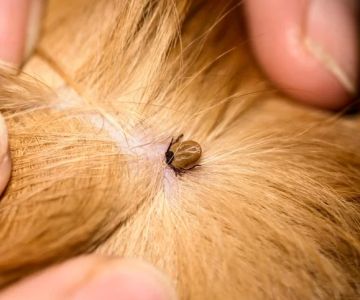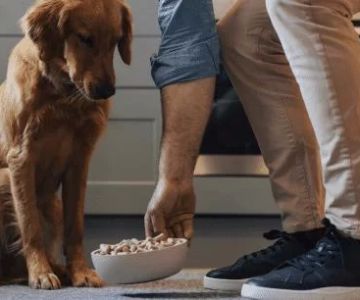- 1 - Importance of Hydration for Pets in Summer
- 2 - Signs of Dehydration in Pets
- 3 - Tips for Keeping Your Pet Hydrated
- 4 - Additional Ways to Increase Your Pet's Water Intake
- 5 - Why Consulting With a Vet is Key
- 6 - Conclusion and Final Tips
1 - Importance of Hydration for Pets in Summer
As temperatures rise during the summer months, hydration becomes increasingly important for our furry friends. Just like humans, pets need an adequate amount of water to stay healthy, especially in the heat. Proper hydration helps regulate body temperature, supports digestion, and keeps their skin and coat in good condition. However, pets are often more susceptible to dehydration, particularly when they are active outdoors or exposed to high heat for extended periods.
Dehydration in pets can lead to serious health issues like kidney damage, heatstroke, and even death in extreme cases. Understanding the importance of hydration is key to preventing these issues and ensuring your pet has a safe and enjoyable summer.
2 - Signs of Dehydration in Pets
Recognizing the signs of dehydration early on is essential for preventing serious health problems. Some common signs of dehydration in pets include:
- Dry Gums and Nose: If your pet’s gums or nose feel dry or sticky to the touch, they may be dehydrated.
- Loss of Skin Elasticity: Gently pinching the skin on the back of your pet’s neck and releasing it can help determine if they are dehydrated. If the skin doesn’t immediately return to its normal position, it may be a sign of dehydration.
- Lethargy and Weakness: Dehydration can cause your pet to become tired, weak, or less responsive.
- Sunken Eyes: Sunken eyes, along with a lack of energy, are another indication that your pet may be dehydrated.
- Excessive Panting or Drooling: If your pet is panting excessively or drooling, it may be a sign of dehydration or heat stress.
If you notice any of these symptoms, it’s important to take action immediately and provide your pet with water. In severe cases, consult a veterinarian to ensure proper treatment.
3 - Tips for Keeping Your Pet Hydrated
Keeping your pet hydrated during the summer requires a proactive approach. Here are some tips to help ensure they get enough water:
- Always Provide Fresh Water: Make sure your pet always has access to clean, fresh water. Change the water multiple times a day to keep it appealing and free from bacteria.
- Use a Pet Water Fountain: Many pets are more inclined to drink water from a fountain, as it mimics the flow of fresh water. A pet water fountain can encourage your pet to drink more frequently.
- Offer Water During Walks: If you're taking your pet for a walk or hike, bring water with you. Offer them water every 15-20 minutes to keep them hydrated, especially on hot days.
- Provide Water-Rich Foods: Some pet foods, like wet food, have a higher moisture content, which can help supplement their water intake. You can also add water or low-sodium broth to their dry food.
- Cool Water Bowls: If your pet is hesitant to drink warm water, try cooling their water bowl with ice cubes, especially on very hot days.
4 - Additional Ways to Increase Your Pet's Water Intake
If your pet isn’t drinking enough water, consider these additional strategies:
- Ice Cubes and Frozen Treats: Some pets love ice cubes or frozen treats made with water, chicken broth, or even pet-friendly fruits. These can help keep your pet cool and encourage hydration.
- Flavored Water: Adding a small amount of low-sodium broth or pet-safe flavoring to their water can make it more appealing and encourage them to drink more.
- Hydration Stations: If you have a large yard or several rooms, set up multiple water stations. This way, your pet will always have easy access to water no matter where they are.
- Pet Popsicles: Make your own pet-safe popsicles by freezing water and healthy pet-safe ingredients like pureed fruits or vegetables. These are especially refreshing on hot days!
5 - Why Consulting With a Vet is Key
While the above tips are helpful, consulting a veterinarian is crucial to ensure that your pet is receiving the proper care for their hydration needs. A vet can help you determine the right amount of water your pet should be drinking based on their size, age, activity level, and health conditions. They can also provide advice on how to prevent dehydration in pets with specific medical conditions, like kidney disease or diabetes.
If you're concerned about your pet’s hydration or notice any signs of dehydration, don’t hesitate to reach out to your vet. They can provide treatments, such as intravenous fluids, if your pet is severely dehydrated, and guide you on long-term hydration strategies.
6 - Conclusion and Final Tips
Ensuring your pet stays hydrated during the summer is essential for their health and well-being. By offering fresh water, using hydration-friendly tools, and providing water-rich foods, you can help your pet stay cool and comfortable all season long. Remember, regular monitoring of your pet’s hydration status and timely consultation with your vet can prevent serious health problems.
If you are concerned about your pet's hydration or overall health, consider scheduling a visit to Hidden Brook Veterinary for professional advice and assistance. Keeping your pet hydrated is a simple but effective way to show your love and care for them!
SEO Title: How to Keep Your Pet Hydrated During Summer: Tips and Solutions SEO Keywords: how to keep your pet hydrated during summer, pet hydration tips, signs of dehydration in pets, keeping pets hydrated, pet summer care SEO Description: Learn how to keep your pet hydrated during the summer with these practical tips and solutions. Discover how to prevent dehydration and ensure your pet’s health and well-being during hot months.










